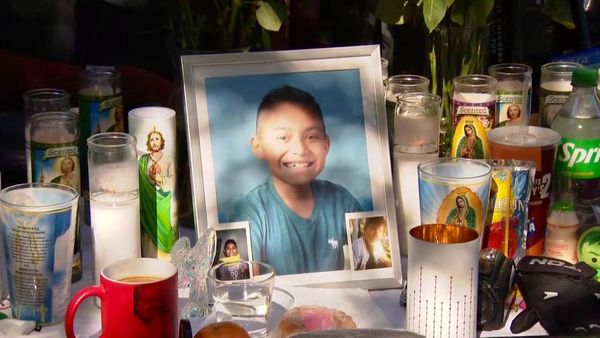
Ion Iliescu, who has died aged 95, served three terms as the elected president of Romania, setting one of the best examples in Europe of how former communist leaders could support democratic reforms and maintain social stability in their countries when the old system of repressive one-party rule crumbled.
Iliescu had revealed himself as a progressive during the harsh dictatorship of Nicolae Ceaușescu. He was appointed head of the Communist party’s agitation and propaganda department in 1965, the year that Ceaușescu became party leader.
For more than a decade Iliescu served him loyally but gradually became disillusioned by Ceaușescu’s megalomania. Iliescu did not hide his views and he was forced to accept a series of minor jobs in provincial cities, though he was able to remained a member of the party’s central committee. In 1984 he suffered his final demotion by being given the post of running a technical publishing house.
There he could have remained, in obscurity, like many other minor party officials from modest backgrounds. Iliescu was born in Oltenita, a small southern town on the Danube. His father, Alexandru, was a railway worker who supported the banned Romanian Communist party and was imprisoned for four years during the second world war. His mother, Maria, was a Roma who left when Ion was an infant, and he was brought up by his stepmother and grandparents. He studied engineering for four years at the Moscow Power Engineering Institute. Back in Romania he joined the Union of Communist Youth in 1944 and the Communist party in 1953.
The revolutionary year of 1989 changed the landscape of eastern European politics and gave Iliescu a chance to shine. The collapse of communism in East Germany, Czechoslovakia and Poland in 1989 produced similar demonstrations for change in Bucharest and other Romanian cities, but unlike the behaviour of the authorities in those countries, the security forces in Romania were ordered to shoot protesters.
In the turmoil and bloodshed, Iliescu emerged as a leader of the pro-reform forces. He founded a broad-based National Salvation Front (FSN). With the army beginning to split, Ceaușescu and his wife, Elena, fled the capital in a helicopter. They were captured, held at an army base and then shot. Iliescu went on national TV to “salute the popular movement” and promise free elections, political pluralism and market reforms.
As leader of the FSN, Iliescu had authorised the execution of the Ceaușescus. He admitted it in his memoirs, saying he later regretted it. The hope had been, he said, that it would end all resistance to the revolution. Iliescu was named Romania’s interim president in December 1989. Apparently shocked by the Ceaușescus’ death, his new government abolished capital punishment.
In the chaos of the unexpected collapse of the old system, class tensions were high, and there were fierce debates over whether to reprivatise state enterprises and put former communists on trial, or at least bar them from public leadership roles. The Communist party was dissolved and Iliescu left the FSN. He founded the Social Democratic party in a clear sign that he hoped to replace traditional Romanian authoritarianism with Scandinavian-style politics.
It was an uphill struggle. In the days after the Ceaușescus’ execution more than a thousand people were killed in clashes with the security forces. Street protests against Iliescu’s government were constant and in May 1990 Iliescu called on hundreds of leftwing miners to be bussed to Bucharest to break up the protests. The bloody clashes that ensued were called the Mineriads.
In spite of the violence, Iliescu remained popular and in June 1990 he won a staggering result, securing 85% of the vote for the presidency.
The issue of blame for the post-revolutionary violence continued to fester for decades. In 2018 prosecutors indicted Iliescu for “crimes against humanity” over the deaths in the clashes that followed the Ceaușescus’ execution. In a separate case he was charged with orchestrating the miners’ violence in 1990. Both sets of charges were ultimately dropped.
In 1996 Iliescu narrowly lost the presidential election to Emil Constantinescu, a professor of mineralogy who had been a leader of the street protests in 1990 that the miners broke up. He represented the centre-right of Romania’s new politics, which favoured the rapid privatisation of the country’s state-run economy. He had come second to Iliescu in the presidential race of 1992.
His promises of rapid economic progress won more support from voters in 1996. Iliescu lost the election but stepped down with dignity. It was the first time in eastern European politics that a former communist leader had accepted electoral defeat. But Constantinescu’s period in power disappointed his supporters. His promises of economic advancement came to nothing, and in the 2000 election Iliescu made a comeback.
Constantinescu’s legacy on foreign affairs was more successful than his policies on domestic issues. He pressed for Romania’s membership of the European Union and Nato. This pleased western governments who remained wary of Iliescu. But Iliescu had changed his views and when he resumed power in 2000 he continued the movement towards Romania’s membership of the Euro-Atlantic club of Nato and the EU.
His term in power ended in 2004 and he largely retired from public life. In a brief statement in May this year he congratulated Nicușor Dan, Romania’s new centre-right president, on his election victory.
He is survived by his wife, Elena (nee Șerbănescu), whom he married in 1951.
• Ion Iliescu, statesman, born 3 March 1930; died 5 August 2025







